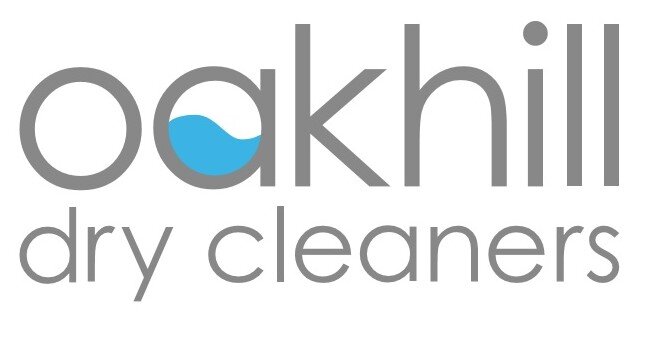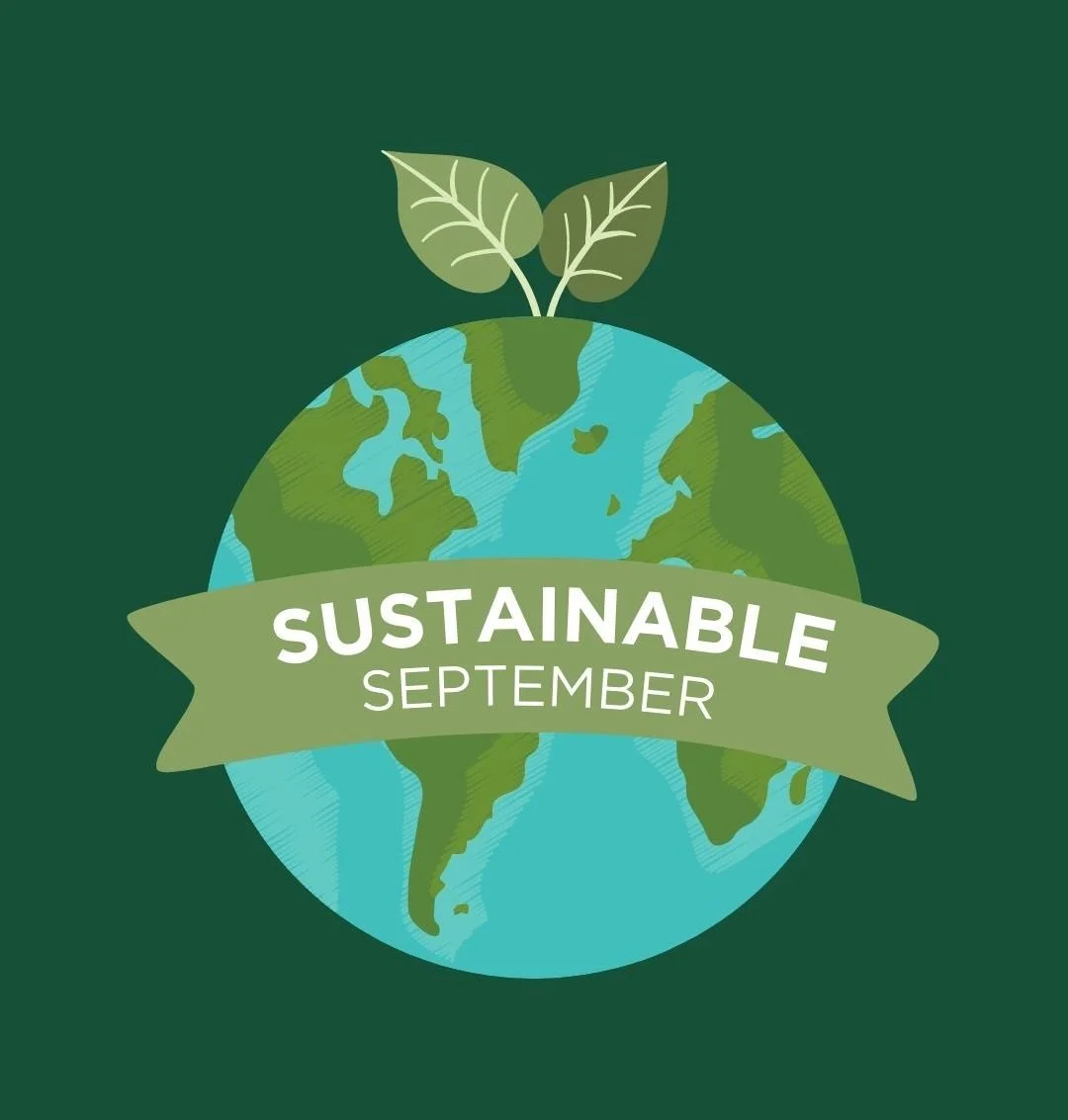Make Sustainable September Year-Round and “Circular”
It’s Sustainable September and to celebrate the recent coverage of Oak Hill Dry Cleaners as a “Clean and Green” business, we decided to focus on sustainability. With that in mind, let’s start with a closer look at the very foundation of our business – clothing.
More importantly, clothing habits and shifting from a linear to a circular routine.
Wow, that sounds so formal and serious and fancy…but, what the heck does it mean? Well, how you choose, keep, and ultimately eliminate clothing from a wardrobe all have a massive impact on your budget, the environment, and the world around you.
Follow the path of a single garment from its creation to its final day of use and it will astonish you. From agriculture, water, and electricity to transportation and human labor, garments consume astronomical amounts and can prove disastrous when they no longer serve a purpose.
To kick-off our Sustainable September content (yes, we know, it’s already half-way through the month, but keep in mind that we intend to keep going far beyond September) we’ll start with a deep dive into “circular fashion.”
What’s Circular Fashion?
Circular fashion is an approach to clothing and textile production that focuses on creating a “closed-loop system”, where products are designed, produced, consumed, and eventually recycled in a way that minimizes waste and environmental impact.
We should all love that idea, especially because it comes with some lofty goals. These include:
Design for Longevity: Clothing is made to last longer through durable materials, timeless designs, and high-quality construction, reducing the need for frequent replacements.
Resource Efficiency: This includes using sustainable materials, such as organic fibers, recycled fabrics, or biodegradable substances, and minimizing water, energy, and chemical use during production.
Reuse and Recycling: Circular fashion encourages the reuse of garments through second-hand markets, rental services, or upcycling. When garments reach the end of their life, they are recycled into new products, thus keeping materials in use and out of landfills.
Reduction of Waste: By adopting zero-waste design techniques, such as pattern-making that reduces fabric offcuts, and by embracing production processes that minimize pollution and waste.
Responsible Consumption: Promoting mindful purchasing habits, such as buying fewer, higher-quality items and choosing products that have a reduced environmental footprint.
Cutting the traditional, linear fashion model of "take, make, dispose," and turning it into a more sustainable cycle that conserves resources and reduces the industry's environmental impact makes circular fashion a fantastic goal.
As many of us head towards greater sustainability, circular fashion has emerged as a vital approach to reducing waste and promoting environmental responsibility within the fashion industry as well as garment care.
At its core, circular fashion revolves around the principles of repair, reuse, and recycle, ensuring that garments have extended life cycles, and minimal impact on the planet. Not so surprisingly, laundry and dry cleaning can play key roles. They can each help to keep clothes in good condition, reducing the need for new purchases, and even transforming old garments into new materials or items.
Let’s dive into how laundry and dry cleaning might overlap each of the core principles of circular fashion.
Repair: Preserving Garments Through Proper Care
The first step in circular fashion is to repair and maintain garments for as long as possible. A well-maintained piece of clothing not only lasts longer but also maintains its value and aesthetic appeal, reducing the need for new purchases.
Laundry and dry cleaning are essential to this process—proper washing, drying, and handling of fabrics can prevent unnecessary wear and tear that might lead to damage. Here’s how you can help repair and maintain your clothing:
Wash Smarter: Over-washing or using harsh detergents can degrade fibers over time. Instead, opt for eco-friendly detergents and shorter, gentler cycles that are less abrasive on fabrics.
Dry Clean as Needed: Many garments have tags indicating that dry cleaning is the most appropriate method of cleaning and care. The glitch comes with the type of cleaner you use. An eco-friendly cleaner is your best bet as they often have alternatives to solvents and know just what to do to get a garment clean without harming it, putting it through unwanted wear and tear, and ensure you enjoy it as long as possible.
Mend and Restore: If a garment gets damaged, such as a broken zipper or a loose seam, fix it instead of throwing it out. Basic mending can breathe new life into your wardrobe.
Spot Treatments to Avoid Full Washes: Frequent washing can stress fabrics, so treating stains on the spot prevents the need to wash the entire garment. It helps retain color and fabric strength, especially for delicates.
By taking care of clothes and repairing small issues, you significantly extend their lifespan and reduce the need for replacements.
Reuse: Keeping Clothes in Circulation
The second pillar of circular fashion is reuse. Extending the life of a garment by wearing it longer, swapping it with others, or donating it to someone in need is a powerful way to prevent textile waste. How you care for your garments directly impacts their potential for reuse.
Laundry plays an integral role here, too:
Donating Clean Clothes: Laundering clothes before donation helps extend their usability and makes them more appealing for new owners. It’s a simple act that keeps clothes out of landfills and in circulation.
Laundering Secondhand Clothes: Whether you thrift or participate in clothing swaps, properly laundering pre-loved clothing can restore items to near-new condition. Using gentle, eco-friendly cleaning methods, such as wet cleaning or specialized detergent for vintage clothes, makes sure these items stay in circulation.
Upcycling Through Laundry: Sometimes, even when clothes are no longer wearable in their original form, they can be upcycled into new creations. Old t-shirts can be turned into cleaning rags, tote bags, or quilts—simple laundry practices like washing fabrics before upcycling ensures they’re clean and ready for their next purpose.
The reuse of clothing reduces the demand for new production, which lowers the resources needed to make new garments. Every time you reuse or swap clothes, you participate in circular fashion.
Recycle: Giving Old Garments New Life
When clothes reach the end of their wearable life, recycling is the next best step in circular fashion. Fabrics can be broken down and repurposed into new materials, contributing to a zero-waste future. Although this process typically happens in textile recycling facilities, laundry can still assist in recycling efforts.
Recycling Garment Fibers: Before garments are sent to textile recycling facilities, it’s important to wash them thoroughly. Clean fabrics are easier to process and transform into new materials, whether it's for insulation, industrial products, or new fibers for clothing.
Transforming Clothes into New Items: With a little creativity, old clothes can be reimagined into entirely new products. For example, you can turn old denim into rugs, make pillow stuffing from old sweaters, or cut fabric scraps for DIY projects.
Reduce Microplastic Pollution in Recycling: Proper laundry techniques like using microplastic filters (such as the Cora Ball) can help capture harmful fibers that are released during washing. This prevents them from entering water systems, which is critical as recycled fabrics often contain synthetic fibers.
By recycling old garments, we give fabrics a second life and reduce the need for raw material production, closing the loop in circular fashion.
Laundry as a Catalyst for Circular Fashion
In conclusion, laundry is more than just a routine chore—it’s a critical element in the circular fashion movement. Through responsible care, repair, and proper cleaning techniques, laundry and dry cleaning contributes to the longevity of garments, allowing them to be worn, reused, and recycled for years to come. By integrating sustainable laundry practices into your routine, you actively participate in the larger effort to reduce waste and protect the environment.
Whether you’re mending a beloved shirt, laundering thrifted finds, or preparing old clothes for recycling, the simple act of doing laundry can have a significant positive impact on the planet. So next time you head to the laundry room, think about how your actions can help foster a more circular, sustainable fashion industry.
And when an item requires a more experienced or specialized hand, get in touch with us at Oak Hill Dry Cleaner. We are dedicated to the most eco-friendly practices and want to support everyone with the goal of circular fashion.


